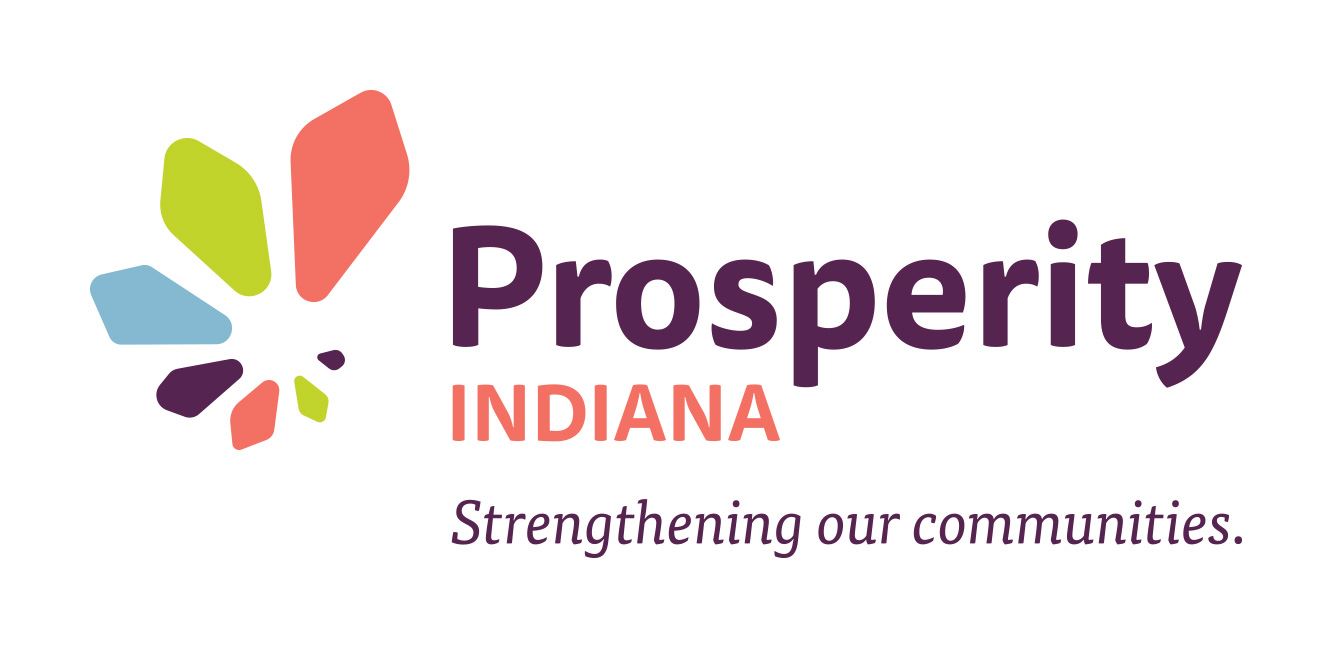The following is part of a special feature series to commemorate IACED’s 30th anniversary by highlighting past community development award winners. Mark Lindenlaub was the 2012 recipient of the Michael Carroll Community Economic Development Leadership Award. IACED’s 30th Anniversary Celebration was held November 16, 2016 during the Prosperity Indiana Summit. During that celebration, IACED officially launched its new brand, Prosperity Indiana.
Mark Lindenlaub’s career may have taken some twists and turns – from landscape architecture to affordable housing to senior services. But there’s a common thread that has lured him to all of the work he’s done: finding problems needing a solution. And over the years, managing nonprofits has provided plenty of opportunities to do just that. Armed with degrees in environmental design, landscape architecture, and an MBA, Lindenlaub thought he knew exactly what he wanted to do with his career.
“I think everybody, when they’re in college, has a vision of what kind of change they want to make in the world and the impact that they want to have,” Lindenlaub said.
But the realities of the field and external influences, like the economy, made him think twice about his direction. So, he ultimately “traded in wingtips for work boots” and went to work in Columbus.
“The economy was not great in the early ’90s. It was a slow time. A lot of practitioners went into teaching. That was a turning point,” Lindenlaub said. “I really had made a decision to find something that would be personally fulfilling to me. And that was housing. It was an opportunity, I felt, to do work that would impact people in a positive way.”
But it was landscape architecture that first brought the West Lafayette native to Columbus, where the entirety of his career in affordable housing has played out. He worked on the Mill Race Park project in Columbus, which received two landscape architecture awards for its unique design that is accommodating to the annual flooding that the area experiences. When that work was winding down, he became aware of the opportunity at Housing Partnerships, Inc.
While he didn’t have a resume that touted experience in managing a nonprofit or affordable housing, he certainly had transferable skills that made him a good fit. He was hired as the executive director of HPI in 1993.
“You’ve got to be organized, read in detail, follow directions, and be a good problem solver. Depending on the role, those are all business management skills that go with running a small nonprofit. I didn’t have exact training,” Lindenlaub said. “But I think the design life I had before was helpful. Design is about solving problems. I think that background has been helpful in doing the work I’ve been involved with.”
The very first problem he had to solve when hired by HPI was to find funding. Describing the climate as being much different than today, his first order of business was to “find some grants to build some housing or you’ll be out of a job.”
Over the years, HPI did just that – found money and built housing.
Lindenlaub said, “Once we got good at it, we were pretty successful. At a time, we were getting $1 million in grants every year and were instrumental in Bartholomew County being really successful.”
But even in light of the organization’s successes in that regard, Lindenlaub and his board realized as HPI was approaching its 20th anniversary that, while they had great organizational success stories and wonderful volunteer experiences, they “hadn’t really had as much community change as [they] would have liked.”
“We wanted to orchestrate neighborhood change and improvements. But when you look at housing development funding, it doesn’t really provide the flexibility to do that. It encourages it, but it’s not providing a lot of funding to do it, which resulted in a failure to execute change in our communities,” Lindenlaub said.
For HPI, the solution for addressing their concerns around funding for small housing projects and the desire to address the needs of the community beyond their housing concerns led to the merger of HPI with Aging and Community Services of South Central Indiana, Inc. to become Thrive Alliance. Lindenlaub said that several broader external factors also made the merger essential – the country’s economic collapse in 2008, growth of the federal debt, and an aging society, especially the ratio of retirees versus those in the workforce.
“It really impacts our industry and community that we may not have good solutions to address those issues. It gets back to the problem solving aspect. We have to reinvent how we do our work because there is not going to be enough money to do our work how we’ve been doing it.” He said, “How are we going to facilitate that change to make our mission more successful in the community?”
The combined services of the two groups Lindenlaub merged in Columbus address both the individual services and housing needs of their respective clients. In fact, Lindenlaub said that one-third to one-half of Thrive’s housing clients are also aging clients. So, although the consolidation of 12 HPI employees with the 115 staff of the area agency on aging took a couple of years and involved a steep learning curve, and Lindenlaub now “know[s] a lot more about Medicaid than [he] ever wanted to know,” he said it was the right decision.
“We had some overlap. But in terms of being intentional with connecting those services, we weren’t doing any of that previous to coming together. The main thing driving us now is: how do we integrate even more fully?”
Part of that integration plan is to determine what housing projects best line up with the organization’s primary client-base. Thrive is specifically looking to do more senior housing projects, but Lindenlaub knows they will face a funding challenge because the projects are generally too small for tax credits but too large to be entirely grant-funded. Lindenlaub said the organization is also working with clients now who seem to have additional barriers to improving their lives.
Thinking about concerns like the Cliff Effect, Lindenlaub said, “It seems like there is a systemically rooted set of barriers that make it really hard for families to move up the socioeconomic ladder. We’re seeing more families that are two or three generations stuck in poverty.”
And while Lindenlaub does not believe that housing is enough to create the community- or even family-level change they are seeking, two housing projects are what stand out to Lindenlaub as being some of his proudest moments of his career. One was a four-house infill project in the downtown Columbus area. He said, “It was pretty exciting to see something of that scale. For an organization that took 18 months to build its first house, that was a pretty big leap forward for the organization.”
Another project that gave HPI “some prominence and more respect in the community” was the adaptive reuse of an old armory, which is a project with only 25 units but made a big difference in the community and to its residents.
“In today’s world, we wouldn’t do tax credits for that project. We were too dumb to know it wouldn’t work. We actually found the investors ourselves and syndicated to local banks and general contracted it ourselves to make the budget work. We turned it into housing instead of a parking lot. It is a highlight and feather in our cap – we actually won an award for that. That was a neat project for us,” Lindenlaub said. “In terms of career high points, those are definitely two that helped set the foundation for achieving bigger impact and reaching more families.”
And at the end of the day, it’s going deep with families to address all of their needs that means the most to Lindenlaub. In fact, that’s exactly why he received the Michael Carroll Community Economic Development Leadership Organization in 2012. His personal reflection around HPI’s level of impact in Columbus had led him and his board to change the organization’s mission. Then through his role as a member, and past president, of IACED’s board, HPI’s local discussion ultimately fed into a larger conversation about addressing community development work more comprehensively across the state.
Similarly, his personal fight against losing property tax exemption for HPI’s affordable housing properties in Bartholomew County has led him to testify time and again on behalf of IACED’s membership to see that a single interpretation affirming the charitable purpose of affordable housing created by nonprofits is prescribed statewide. Still an issue to deal with during the upcoming legislative session, Lindenlaub said that what “started out of economic self-interest” is now “a community moral issue.” But for a problem solver by nature, it’s just another aspect of the work.
Lindenlaub said, “There are always new and growing challenges to address. It has always been what drives me. It’s kind of how my brain is wired. I like finding solutions.”

By Jessica Love, Associate Executive Director
Jessica Love is the Associate Executive Director for Prosperity Indiana, formerly known as the Indiana Association for Community Economic Development. She works with the Executive Director to provide team leadership for staff and is responsible for developing and managing organizational systems for Prosperity Indiana to ensure effective management and control. She also provides one-on-one technical assistance to Prosperity Indiana members, informed by her media and grants management background. With nearly 15 years’ experience in the nonprofit sector, Jessica’s consulting work focuses primarily on resource development and creating processes and tools for effective management and program compliance.

